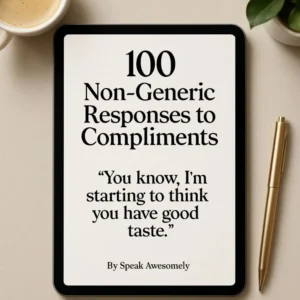Have you ever walked into a room in Japan and wondered, am I saying hello the right way? I still remember my first day at a university exchange programme in Tokyo—everyone greeted each other so naturally, while I hesitated, unsure if a simple “hello” was enough or if I should bow, smile, or say something more formal. That small moment of awkwardness made me realise: greetings in Japan aren’t just words—they’re cultural bridges.
In this article, I’ll take you through the best ways to say hi in Japanese, drawing from real experiences, insights from Japanese language teachers, and cultural etiquette that many learners miss. Whether you’re visiting Japan, studying the language, or just fascinated by its nuances, this guide will give you both the words and the context to use them with confidence.
Why Greetings Matter in Japanese Culture
In Japanese society, greetings (挨拶 aisatsu) carry more weight than in many Western cultures. They’re not only about politeness—they signal respect, social awareness, and even humility. A simple “hi” is not one-size-fits-all. How you greet someone can reveal your relationship with them, the time of day, and the level of formality required.
As Japanese linguist Harumi Mori notes in an interview with The Japan Times, greetings “are fundamental to maintaining social harmony, a concept known as wa. Missing or misusing them can unintentionally create distance.”
Everyday Ways to Say Hi in Japanese
1. こんにちは (Konnichiwa) – The Universal Hello
If you’ve taken even one Japanese class, you’ll know konnichiwa. It’s the go-to greeting during the day, roughly meaning “good afternoon.” However, it’s not typically used in the morning or evening.
Real-world tip: On my first visit to Kyoto, I noticed that locals rarely said konnichiwa to close friends—they opted for more casual forms. Think of konnichiwa as what you’d say to a shopkeeper, teacher, or someone you don’t know well.
2. おはようございます (Ohayō gozaimasu) – Good Morning (Polite)
Literally “it’s early,” ohayō gozaimasu is used until around 10–11 a.m. The shorter ohayō works fine with friends and family.
Cultural nuance: Interestingly, in workplaces like TV studios or theatres, staff may use ohayō gozaimasu even in the afternoon or evening. It’s a tradition that signals team spirit rather than time.
3. こんばんは (Konbanwa) – Good Evening
When greeting someone after the sun sets, konbanwa is your polite choice. It’s less common among close friends but perfect for semi-formal encounters.
Casual Greetings for Friends
4. やあ (Yā) – A Simple “Hey”
Think of yā as the Japanese equivalent of saying “hey” or “yo.” It’s relaxed and friendly, often used among young people.
5. よう (Yō) – Street-Style Hi
Popular among men, yō carries a slightly cool, casual vibe. You might hear it in anime or among teenagers, but it’s not ideal in professional settings.
6. 元気? (Genki?) – “How are you?”
Instead of saying “hi,” friends often jump straight into genki? (Are you well?). It’s both a greeting and a way to show you care.
Personal note: When I started using genki? with my Japanese classmates, I noticed how much warmer and natural the conversations became—it broke the stiffness that sometimes comes with textbook phrases.
Formal Greetings and Situational Use
7. はじめまして (Hajimemashite) – Nice to Meet You
This phrase is strictly for first-time introductions. It literally means “this is our beginning.” Pair it with a bow for full politeness.
8. お疲れ様です (Otsukaresama desu) – Workplace Greeting
This one doesn’t translate neatly into English. Used in offices, it acknowledges effort and teamwork. You can say it when passing a colleague, ending a meeting, or even leaving the office.
Expert insight: According to Dr. Noriko Ishii, a sociolinguist at Waseda University, otsukaresama desu embodies the Japanese cultural value of recognising collective effort. It’s less about “hi” and more about “I see and appreciate your work.”
9. いらっしゃいませ (Irasshaimase) – The Shop Welcome
If you’ve ever entered a Japanese shop, you’ve likely been greeted with irasshaimase. It’s not something you reply to, but knowing it prevents confusion. It means “welcome, please come in.”
Non-Verbal Greetings: Beyond Words
In Japan, how you say hi is as important as what you say. Bowing (ojigi) is deeply tied to greetings. A casual nod works for friends, while a deeper bow signals respect in formal settings. Smiling, though universal, can vary—some Japanese people may smile politely even when they feel reserved.
First-hand experience: At my internship in Osaka, I quickly learned that a well-timed bow often carried more meaning than words. My colleagues appreciated it far more than my textbook-perfect konnichiwa.
Practical Tips for Learners
- Match formality to context – Use ohayō with friends, ohayō gozaimasu with teachers or colleagues.
- **Don’t overuse **konnichiwa – It’s correct, but can sound stiff if you’re with peers.
- Observe and adapt – Watch how locals greet each other in different settings.
- Pair greetings with bows – Even a small nod shows cultural understanding.
- Be mindful of timing – Don’t say konbanwa at noon or ohayō at night unless in a workplace context.
FAQs
Q: Can I just say “hello” in English in Japan?
Yes, many Japanese people understand “hello,” but it can come across as foreign. Using Japanese greetings, even simple ones, shows respect.
Q: What’s the most casual way to greet a close friend?
Yā or genki? are very natural among friends. Younger people may even skip words and greet with just a nod or wave.
Q: How should I greet elders or superiors?
Stick to polite forms like ohayō gozaimasu, konnichiwa, or konbanwa with a bow.
Q: Do Japanese greetings change by region?
Yes. For example, in Osaka, people may greet with mōkari makka? (roughly “Are you making money?”), a phrase rooted in merchant culture.
Final Thoughts
Learning the best ways to say hi in Japanese isn’t just about memorising phrases—it’s about connecting with people and showing respect for their culture. I’ve found that even when my grammar stumbled, a sincere greeting often opened doors to meaningful conversations and friendships.
If you’re planning to visit Japan or deepen your study of the language, start with greetings. Practise them, use them in real contexts, and don’t be afraid to make mistakes. Locals will almost always appreciate the effort.
👉 Have you tried using Japanese greetings in daily life? Which one felt the most natural to you? Share your experiences in the comments—I’d love to hear your stories and tips.
Read Also: How Should You Reply To An Interview Email?
Recommended Products

100 First Texts That Always Get a Reply
Original price was: $ 15.$ 5Current price is: $ 5.Add to Cart
All Emoji Meanings Guide (3500+)
Original price was: $ 15.$ 7Current price is: $ 7.Add to Cart
100 Romantic Pick-Up Lines + 20 Bonus 18+ Lines | Modern Dating & Flirting Guide for Confidence, Charm, and Attraction
Original price was: $ 25.$ 10Current price is: $ 10.Add to Cart
100 Witty & Unexpected Responses to Compliments – Speak Awesomely’s Ultimate PDF Guide for Confident, Clever Conversations
Original price was: $ 15.$ 6Current price is: $ 6.Add to Cart








